Our Location
304 North Cardinal St.
Dorchester Center, MA 02124
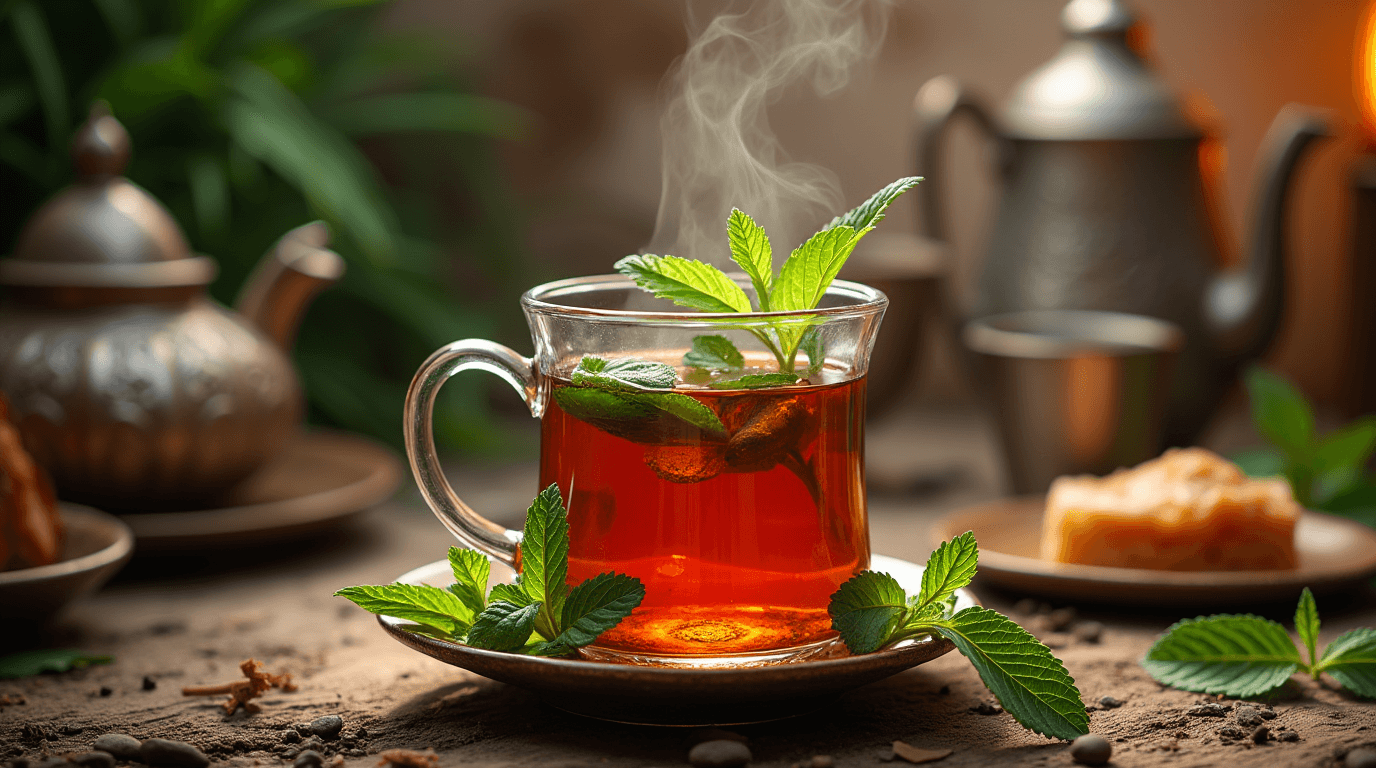
Did you know that Moroccan mint tea is consumed over 4 times per day by the average Moroccan household, making it the most frequently enjoyed beverage in North Africa? This surprising statistic challenges the common belief that coffee dominates global beverage consumption patterns. Moroccan mint tea, a harmonious blend of green tea, fresh mint leaves, and sugar, has been cherished for centuries not just for its refreshing taste but also for its numerous health benefits and cultural significance. This traditional beverage offers a perfect balance of stimulation and relaxation, making it an ideal choice for any time of day.
To prepare authentic Moroccan mint tea, you’ll need:
The fragrant mint leaves should feel crisp to the touch, with a vibrant green color that promises to release their invigorating essential oils. For those seeking alternatives, you can substitute honey for sugar if preferred, or use dried mint when fresh isn’t available (though the flavor profile will be slightly less vibrant).
This efficient brewing process allows the flavors to develop fully while still fitting easily into your busy schedule. Unlike some specialty teas that require extensive steeping times, Moroccan mint tea delivers its full-bodied flavor profile relatively quickly.
ابدأ بتسخين إبريق الشاي بالماء الساخن. حرّكه بشكل دائري ثم تخلص من الماء. هذه الخطوة الأولى الحاسمة تساعد في الحفاظ على درجة حرارة الشاي طوال عملية التخمير، وتزيل أي غبار أو بقايا من الإبريق. إذا كنت تستخدم إبريق شاي مغربي تقليدي (البرادة)، فهذه الخطوة مهمة بشكل خاص لأنها تُهيئ المعدن لتوصيل الحرارة بكفاءة.
ضع شاي البارود الأخضر في إبريق الشاي الدافئ. صبّ كمية قليلة من الماء المغلي (حوالي ربع كوب) على الأوراق، وحرّكها برفق، ثم تخلص من هذا الماء. هذا يُنظّف أوراق الشاي، ويزيل أي مرارة منها، ويُهيئها للنقع الصحيح. للحصول على نكهة أساسية أقوى، جرّب ضغط الأوراق برفق على جانب الإبريق بملعقة قبل التخلص من ماء الشطف.
أضف أوراق النعناع الطازجة والسكر إلى الوعاء. يُهرس النعناع برفق (بلفّ الأوراق أو سحقها برفق) لإطلاق المزيد من الزيوت العطرية. رتّب النعناع عموديًا في الوعاء مع توجيه السيقان لأسفل للحصول على أفضل نكهة – وهي تقنية يستخدمها خبراء الشاي المغاربة لتعزيز نكهة النعناع العطرية.
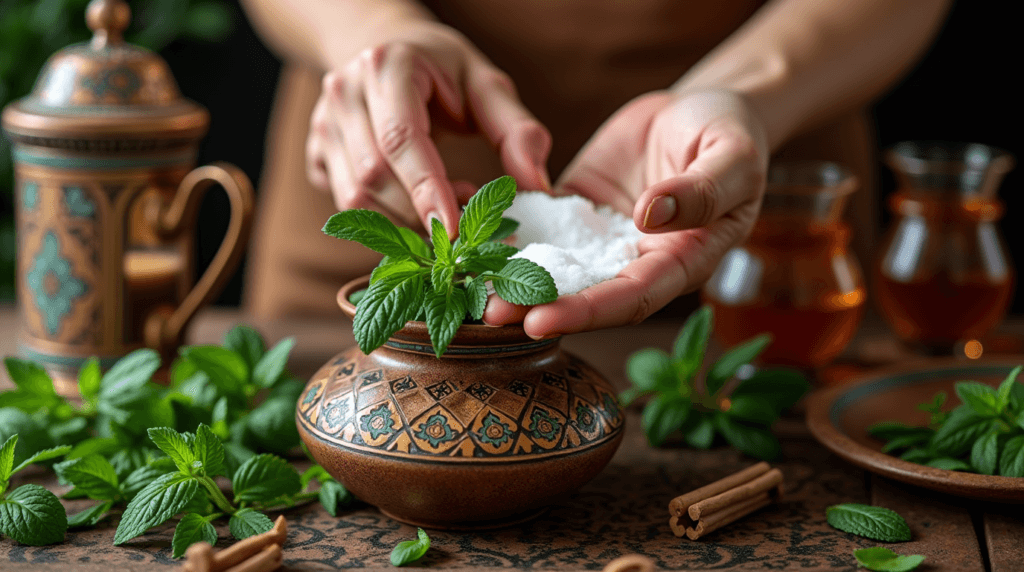
Pour boiling water over the tea and mint. Allow it to steep for 3-5 minutes with the lid on. For the most authentic experience, place the pot on low heat during this time to maintain temperature, a traditional method that ensures optimal flavor development.
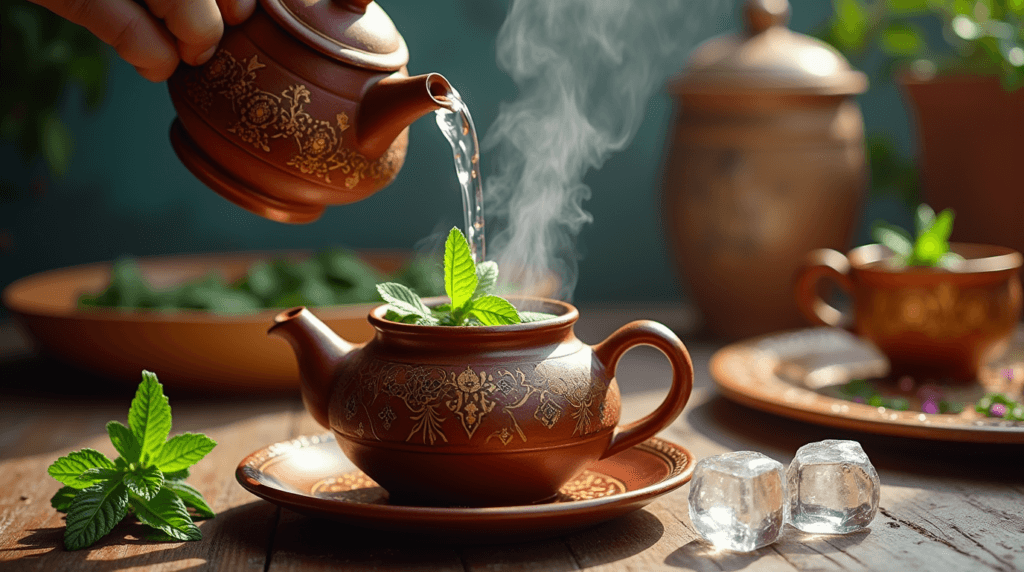
After steeping, stir the mixture well to dissolve the sugar completely. Traditional preparation involves pouring a glass of tea and returning it to the pot several times from a height. This process, called “aeration,” creates the signature foam on top of the tea and helps blend the flavors thoroughly. Try lifting the pot at least 12 inches while pouring for optimal aeration results.
Serve the tea by pouring it from a height into small glasses, creating a delicate frothy layer on top. The traditional pouring technique not only aerates the tea but also cools it slightly to the perfect drinking temperature. Your personal touch might include garnishing with an additional mint sprig or a pine nut floating on top – a regional variation found in certain parts of Morocco.
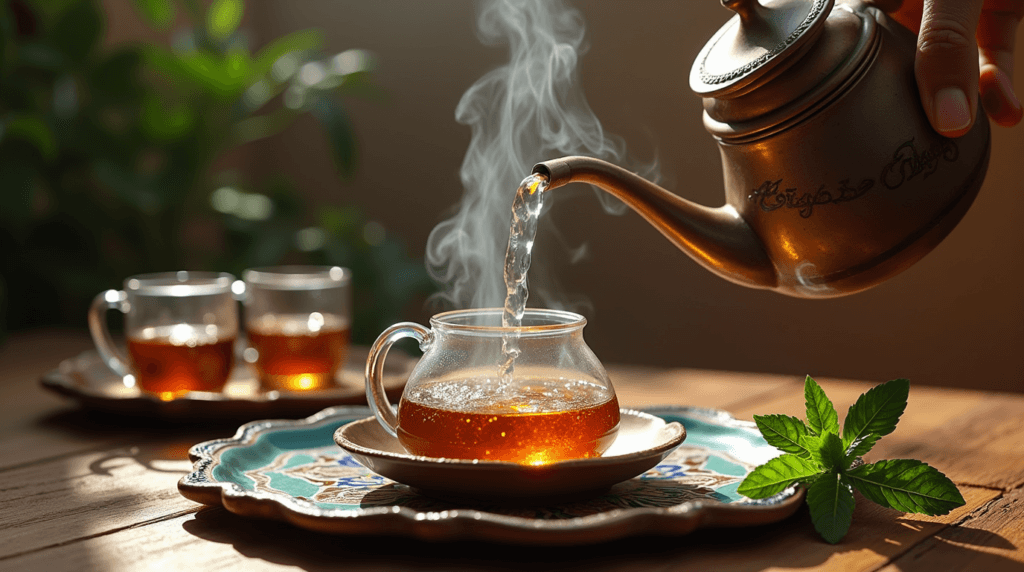
Moroccan mint tea offers several nutritional benefits per 8-ounce serving:
Research from the Journal of Food Science indicates that the combination of green tea and fresh mint provides 2x more antioxidant activity than either ingredient alone, creating a synergistic health effect unique to this beverage.
Make your Moroccan mint tea even more beneficial with these mindful modifications:
Elevate your Moroccan mint tea experience with these serving ideas:
Ensure your Moroccan mint tea reaches its full potential by avoiding these pitfalls:
Maximize freshness and convenience with these storage strategies:
Moroccan mint tea stands as a perfect refreshment that balances stimulating properties with relaxing effects while offering numerous health benefits. Its simple preparation belies the complex flavor profile and cultural significance, making it an ideal beverage for both everyday enjoyment and special occasions. The combination of antioxidant-rich green tea and digestion-aiding mint creates a truly beneficial refreshment.
Ready to experience this North African tradition in your own home? Try making this authentic Moroccan mint tea today and share your results in the comments section below! Subscribe to our blog for more international beverage recipes and cultural insights.
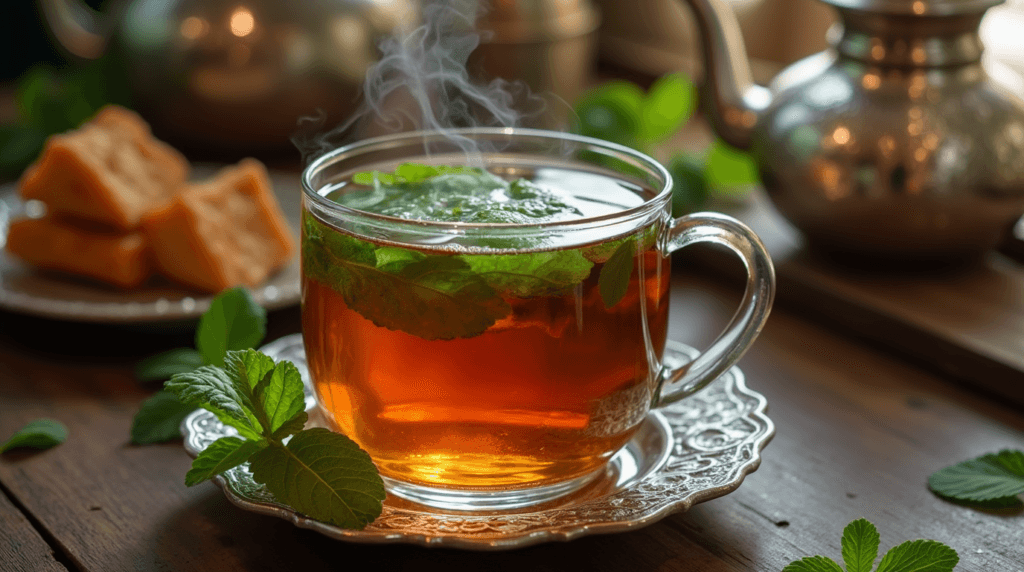
Q: Can I make Moroccan mint tea with dried mint instead of fresh? A: Yes, you can use dried mint as a substitute at a ratio of 1 tablespoon dried mint for every 1/4 cup fresh mint leaves. However, fresh mint provides more vibrant flavor and aroma compounds that are partially lost in the drying process.
Q: Why is my Moroccan mint tea bitter? A: Bitterness usually results from over-steeping the green tea or using water that’s too hot. Remember to rinse the tea leaves first and don’t exceed the recommended steeping time of 3-5 minutes.
Q: Is Moroccan mint tea served hot or cold? A: Traditionally, Moroccan mint tea is served hot, even in warm weather, as it’s believed to help cool the body through perspiration. However, modern variations include chilled versions that are particularly refreshing in summer months.
Q: How much caffeine does Moroccan mint tea contain? A: A typical glass contains approximately 15-30mg of caffeine, roughly one-third the amount found in a similar serving of coffee, making it a more moderate stimulant option.
Q: Can I prepare Moroccan mint tea in advance for a party? A: Yes, you can prepare it up to 2 hours in advance and keep it warm in a thermal carafe. For best results, add a few fresh mint leaves just before serving to reinvigorate the aroma.
There are no reviews yet. Be the first one to write one.